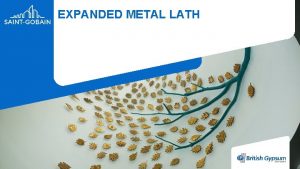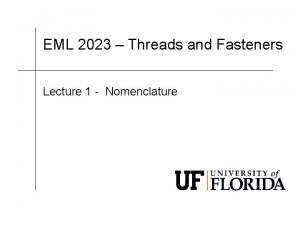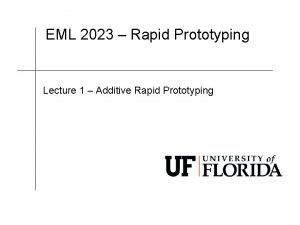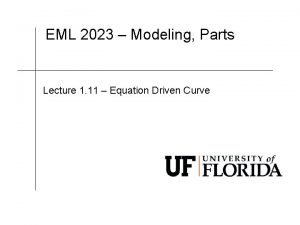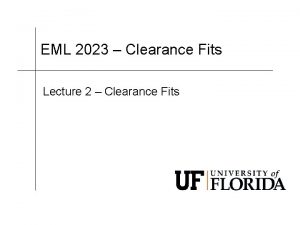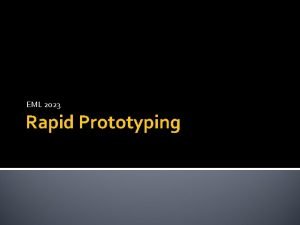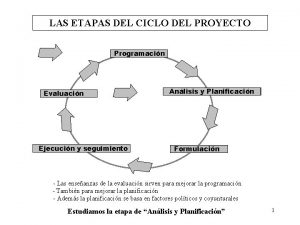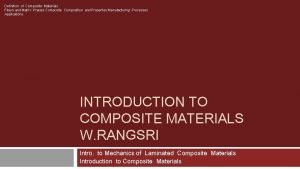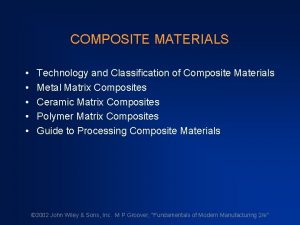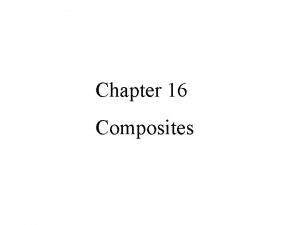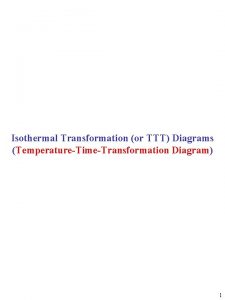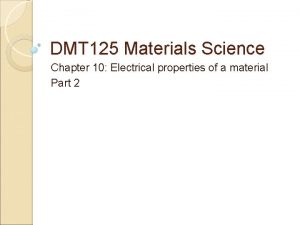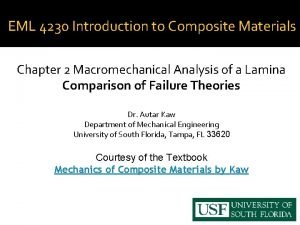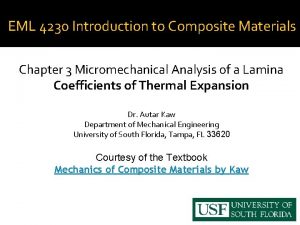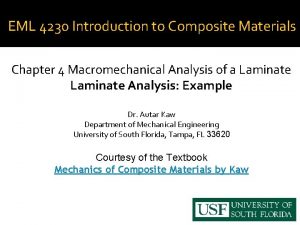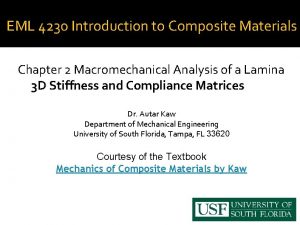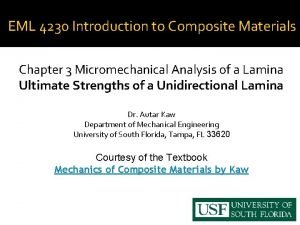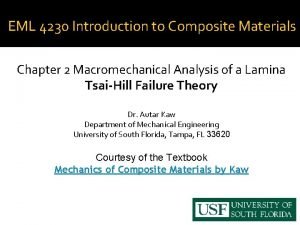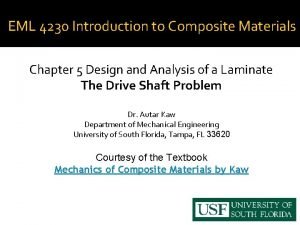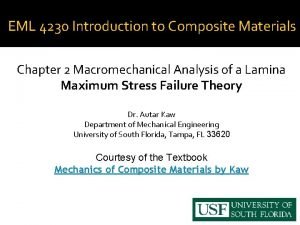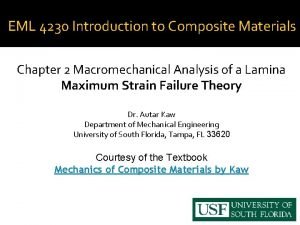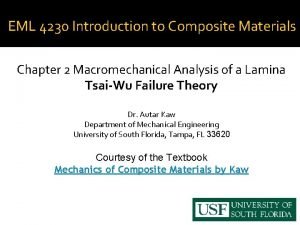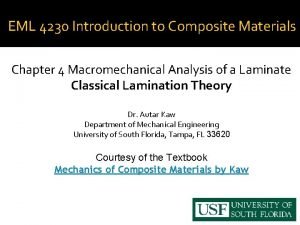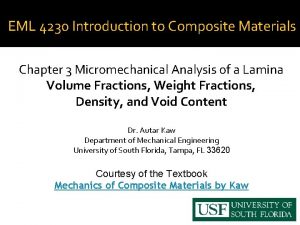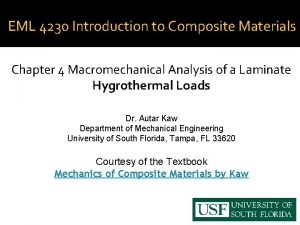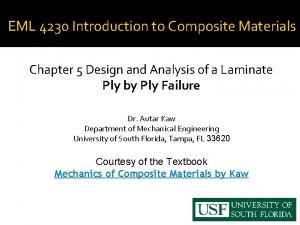EML 4230 Introduction to Composite Materials Chapter 4















- Slides: 15

EML 4230 Introduction to Composite Materials Chapter 4 Macromechanical Analysis of a Laminate Objectives and Laminate Code Dr. Autar Kaw Department of Mechanical Engineering University of South Florida, Tampa, FL 33620 Courtesy of the Textbook Mechanics of Composite Materials by Kaw

Laminate Stacking Sequence FIGURE 4. 1 Schematic of a lamina

Chapter Objectives § § Understand the code for laminate stacking sequence Develop relationships of mechanical and hygrothermal loads applied to a laminate to strains and stresses in each lamina Find the elastic stiffnesses of laminate based on the elastic moduli of individual laminas and the stacking sequence Find the coefficients of thermal and moisture expansion of a laminate based on elastic moduli, coefficients of thermal and moisture expansion of individual laminas, and stacking sequence

Laminate Code 0 -45 90 60 30

Laminate Code 0 -45 90 90 60 0

Laminate Code 0 -45 60 60 -45 0

Laminate Code 0 -45 60 -45 0

Laminate Code Graphite/Epoxy Boron/Epoxy Graphite/Epoxy 0 45 -45 45 0

Special Types of Laminates § Symmetric Laminate: For every ply above the laminate midplane, there is an identical ply (material and orientation) an equal distance below the midplane. § Balanced Laminate: For every ply at a +θ orientation, there is another ply at the – θ orientation somewhere in the laminate.

Special Types of Laminates § Cross-ply Laminate: Composted of plies of either 0° or 90° (no other ply orientation). § Quasi-isotropic Laminate: Produced using at least three different ply orientations, all with equal angles between them. Exhibits isotropic extensional stiffness properties.

Laminate Behavior • Elastic Moduli • The Stacking Position • Thickness • Angles of Orientation • Coefficients of Thermal Expansion • Coefficients of Moisture Expansion

Strains in a beam FIGURE 4. 2 A beam under (a) axial load, (b) bending moment, and (c) combined axial and bending moment. (4. 1)

Types of loads allowed in CLT analysis Nx = normal force resultant in the x direction (per unit length) Ny = normal force resultant in the y direction (per unit length) Nxy = shear force resultant (per unit length) FIGURE 4. 3 Resultant forces and moments on a laminate.

Types of loads allowed in CLT analysis Mx = bending moment resultant in the yz plane (per unit length) My = bending moment resultant in the xz plane (per unit length) Mxy = twisting moment resultant (per unit length)

END
 Composite vs non composite
Composite vs non composite Lath
Lath Eml 2023
Eml 2023 Uf rapid prototyping
Uf rapid prototyping Eml 2023
Eml 2023 Eml 2023
Eml 2023 Eml 2023
Eml 2023 Rapid prototyping wiki
Rapid prototyping wiki Ciclo del proyecto bajo el eml
Ciclo del proyecto bajo el eml Definition of matrix in composite materials
Definition of matrix in composite materials Classification of composite materials
Classification of composite materials Composite materials classification
Composite materials classification Introduction to materials science for engineers chapter 10
Introduction to materials science for engineers chapter 10 Introduction to materials science for engineers chapter 10
Introduction to materials science for engineers chapter 10 Favourite cars
Favourite cars Harmful and useful
Harmful and useful

